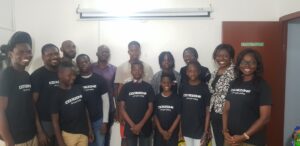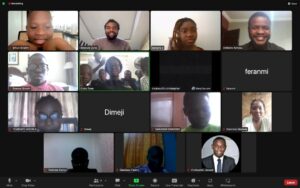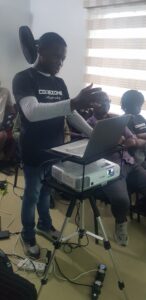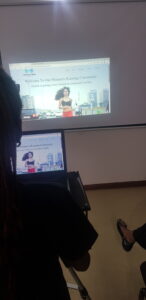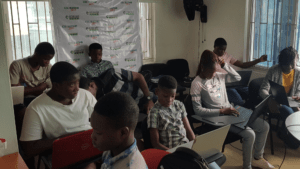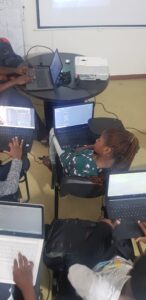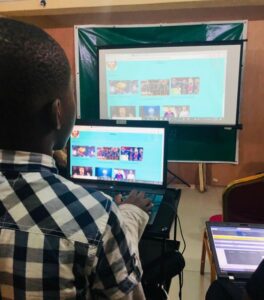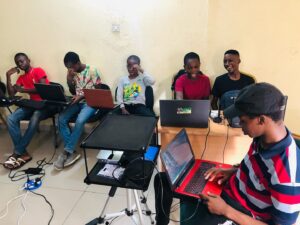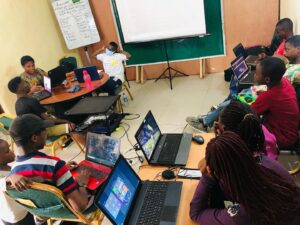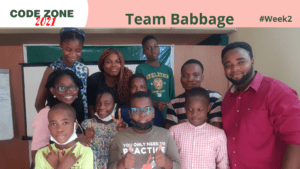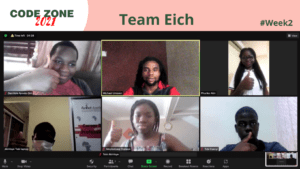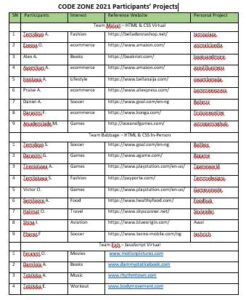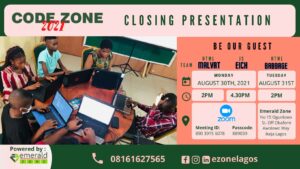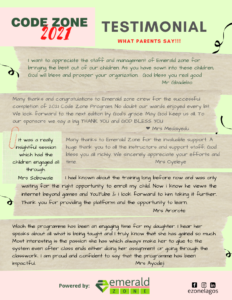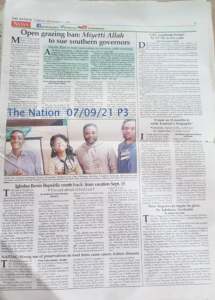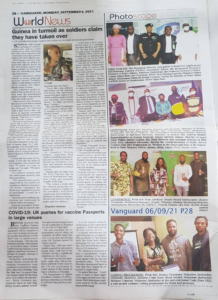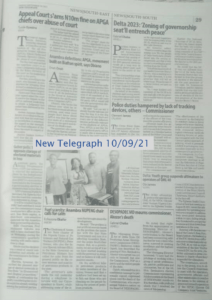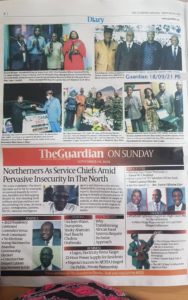We all have a personal brand whether we know it or not. It’s what people think when your name is mentioned, what pops up on Google when someone searches for you, and your presence across social media. It’s important to craft your personal brand strategically and build one that helps advance your career and your life.
What Is A Personal Brand?
While most people think of businesses when they think of a brand, all individuals also have a brand.
Think of it as what people say and think about you. It encapsulates your talents as well as who you are, and it’s how you can differentiate yourself from others. Your brand is both what you stand for and what you do.
The best personal brands are unique, authentic, and trustworthy. They build a strong reputation about you that can help you personally and professionally.
Why Should You Build A Personal Brand?
Since your personal brand captures who you are and what skills you bring to the table, it helps you make powerful connections and leads to new opportunities. You’ll be surprised who starts contacting you when you’re intentional about crafting your brand. But there’s more to it than this.
As of 2020, 43% of the US workforce is made up of freelancers and contract workers. If this applies to you, a personal brand can help you land clients and bring in a larger paycheck. It helps establish your credibility and trustworthiness, and it also enables clients to find you.
Further, according to a CareerBuilder survey conducted in 2018, 70% of employers screen candidates by checking their social media, and 43% use it to check on current workers.
If you’re looking for a job, having a positive and strategic online presence could make or break your candidacy. Considering the average tenure for an employee is around four years, you’ll likely be on the job hunt at some point, so it’s a smart idea to get to work on a personal brand before you need it.
With all of this in mind, let’s dive into how you can begin building a powerful personal brand.
Steps to Build Your Brand
Here are the top seven ways to build a personal brand that shines.
-
Figure out who you are and what you want to accomplish
Since you want your personal brand to be an honest reflection of who you are, what skills you possess, and what your aspirations are, it’s critical to determine this information. Think deeply and be authentic.
You can start by asking yourself:
- What drives me?
- In what areas do I excel?
- What work drains my energy? What work fuels me?
- What settings do I work best in?
- What industries do I find interesting?
- Where do I want to be at the end of my career?
- What impact do I want to have?
Even if the answers to these questions change over time, that’s okay. Your personal brand evolves as you do, so it’s critical that you be honest now and accept that your image may change over time.
If you aren’t sure how to answer these questions, ask friends, coworkers, and family for their input. Even if you’re confident in your answers, it may be a good idea to consult others. They see you in a way you can’t see yourself, and it can help you build a more holistic image of yourself.
Once you’re aware of these different parts of yourself, you can begin crafting an image that aligns with it and helps get you where you want to go.
Doing so also attracts like-minded people who are driven by the same things as you or who see value in what you offer. This creates a stronger network.
-
Determine your unique value proposition
Leveraging your differences is critical for brand-building. If you’re similar to everyone else out there, your personal brand won’t truly be personal. People remember those who stand out.
That’s where your unique value proposition comes into play. It is a short statement that encapsulates what you uniquely offer that no one else does.
When it comes to defining your unique value proposition, there are two steps you should take:
- Understand your strengths. Ask yourself where you’ve excelled in the past. Consider what compliments others give you and what they deem to be your talents. Determining what you do better than most anyone else lays the foundation for your unique value proposition.
- Talk about these strengths.By taking stock of your strengths, you can build your brand around them. Share your expertise and highlight your achievements. All of this builds credibility and establishes trust, so if an employer is considering you or if you’re looking to land a client, they can tell through your brand that you’re the best person to bring on board.
If you’ve determined your strengths but aren’t sure how to turn those into a value proposition, it may help to think in the same way you’d prepare for an interview. Here are a few ways you can better uncover what truly sets you apart:
- Make your answer specific.Many people are hard workers, detail-oriented, and get along well with others. Instead, think about specific instances where your hard work or people skills paid off. What aspects of yourself came together to make those scenarios a success? What made it so you could accomplish what you did instead of others with similar skills?
- Determine how this uniqueness will help you thrive.While it’s great to know what your strengths are, they aren’t useful if they aren’t applied. For instance, if you want to one day transition from sales to being a venture capitalist, consider what strengths of yours translate from sales to VC. Further, consider specific instances where these skills served you well as a salesperson and how those will enable you to thrive in the VC industry.
- Talk about your personality.While hard work is a strength, not all hard workers are equally as outgoing, fun-loving, and agreeable. These personality traits combined with your skills further help you differentiate yourself from the pack. It’s likely a unique combination that serves you well.
Many people make the mistake of trying to appeal to the masses. It’s critically important to define your niche and then work to appeal to your target audience.
If you’re launching a business, your personal niche should be well-aligned with your business. If you want to build a brand to further your career, your niche should be in a specific area of your work.
To determine your niche, start with a broad category that interests you, such as sales, marketing, or finance. From there, narrow it down at least three times:
Imagine the difference between building a brand around marketing versus SEO blog and article writing for startups and small businesses.
The first is incredibly broad and encompasses so many different subjects that it will be really difficult to set yourself apart. The second provides with you a well-defined service that you offer to a well-defined audience. It’s much easier to be an expert in a small niche than a massive one.
If you still aren’t convinced, here are some benefits of niche marketing:
- Less competition.The number of people in marketing is far greater than those in SEO content marketing for startups and small businesses, specifically using blogs and articles. This gives you a much greater chance to stand out and be successful.
- Targeted expertise.While refining your knowledge in a broad category can take years, you can far more quickly level up in a specific niche. Since more knowledge contributes to your domain authority and helps you differentiate yourself, this can only help.
- Improved customer relations.While it’s tempting to try and speak to the masses, engaging with fewer, more targeted prospects is more beneficial. It makes those conversations more engaging and increases the likelihood that a prospect converts (or that a recruiter hires you). You’re also better equipped to get to know your customers personally and tailor their experiences (or get to know a company better and personalize your interactions with them to land a position). All of this positively fuels itself moving forward.
-
Optimize your personal website and social profiles
Website: You can make a free website if you desire it, there are free website builders, meanwhile you need to purchase a domain and web hosting plan. such as Namecheap. for domain name and Bluehost. for webhosting
Now, regarding social media, there are four main platforms that people use for personal branding: LinkedIn, Twitter, and Instagram/TikTok. While it’s vital that these platforms align to tell a cohesive message, you may want to consider focusing on one to start.
LinkedIn
Regarding building a personal brand on LinkedIn, there are some basics you need to cover:
- Fill out all sections of your profile.
- Use a professional headshot.
- Add skills strategically.
- Use keywords that fit your brand or your career throughout your profile
Once the basics are down, it’s time to start engaging. Here’s what you can do:
- Leave 3–10 genuine, insightful commentson other influencers’ posts. Find influencers that are in your niche. If you leave A+ comments, they should gather likes and appear at the top, encouraging other people to connect with you.
- Make one meaningful connection per day.It’s too easy to send empty connection requests and never talk to the person. Instead, try to connect with at least one person on a meaningful level every day.
- Post once per day.It’s daunting to start posting, but this is the fastest way to build a following and strong personal brand. Post around your niche, and make it authentic. Here’s an article to help you start.
Twitter
It’s harder to break into the Twitter-sphere and become a true influencer, but you can use similar techniques as on LinkedIn.
Follow leaders in your desired niche, comment thoughtfully on their posts, retweet them, and begin tweeting insightful thoughts of your own. Jump onto relevant hashtags where you can.
As with any platform, the key to success with Twitter is consistency. The more meaningful conversations you have with those in your niche, the more visibility you’ll get.
Instagram/Tiktok
With Tiktok and the unveiling of Reels (Instagram’s Tiktok dupe), it’s far easier for you and me to become video influencers relatively fast.
There are some stories of near-overnight successes such as Pudgy Woke, who’ve amassed tens or hundreds of thousands of followers (eventually climbing to millions) in a month. While that’s an extreme example, it demonstrates a unique “quick” brand-building opportunity not yet prior.
Focusing on your niche, using relevant hashtags, and most of all, staying consistent is the most critical. Tiktok and Reels are notoriously trend-based, meaning new sounds arise quickly. If you can follow these trends and create insightful or entertaining content, you’ll see results a lot faster.
-
Develop your content strategy
Many people think “giving it all away” with free content is a mistake. If you give it all away, why would people hire you or pay you?
It’s quite the opposite. Providing valuable, genuinely helpful free content proves that you know what you’re talking about. It showcases your expertise. If the free advice worked, imagine what paying you would do?
Thus, step one is to make all content you post genuinely helpful and insightful. You want to be known as a trusted authority in your space.
Step two is to do a bit of research on what subjects within your niche are generating buzz. Google Keyword Planner, Google Trends, and Exploding Topics are great tools helping you uncover what’s trending. You can then jump on trends relevant to your niche to make sure you’re in the conversation.
Step three is remembering to cover all types of content. Posting only video or only text gets stale quickly. Share different types of content across all platforms. These content types include:
- Podcasts
- Online courses
- Infographics
- Text
- Video
- Slideshows
- Webinars
You can share this content on the many platforms available, including:
- Personal blog/website
- Other blogs and online publications
- Email list
- Podcast directories
- Tiktok/Reels
- Youtube
- Quora
- Reddit
- LinkedIn groups
- And more….
Sharing a variety of content across multiple platforms increases your visibility and helps you build your brand more quickly.
While it may not be feasible to do all types of content, avoid sticking to one or two. Instead, aim to rotate through at least four or five of these content types and post them on platforms or via mediums where they’re likely to do best.
Constantly add value to your audience
Although mentioned briefly in the last section, now’s the time to emphasize the importance of adding value to your audience. It’s easy to create stale content, but making content that’s insightful, engaging, and that truly helps your audience is a different story.
Creating valuable content requires planning and intention. Schedule out your content and ask yourself: “would this help me? Is this actionable?”
Don’t settle for fluff or trite advice. Provide your audience with content that will make a real difference in their lives.
Lastly, while amassing a following may seem impressive, it doesn’t do anything if nobody engages with you. Building a community means creating a place where people talk with you and each other, getting to know one another and helping each other out.
If you’re looking to generate business, this is an excellent way to differentiate yourself. Likewise, if you simply want your name out there to advance your career, this helps.
To start building a community, consider these strategies:
- Facebook and LinkedIn groups. These allow people to start threads on relevant topics and talk among themselves. You can chime in as often as you want to spark conversations.
- It’s hard to overestimate the value of meeting with people face-to-face. These meetings can be one-on-one, or you can host large gatherings of people to come together, share, and learn.
- Webinars allow you to gather people together for a shared learning experience. This is an opportunity for you to meet your audience, share your expertise, and continue developing yourself personally.
Conclusion
While building a personal brand is a lot of work, the payoff is enormous when done correctly. Personal brands allow you to build a network of professionals who see your worth and think of you first when new opportunities arise.
Whether you’re looking to generate business, accelerate your career, find a mentor, or never job hunt again, a personal brand can get you there.
—


